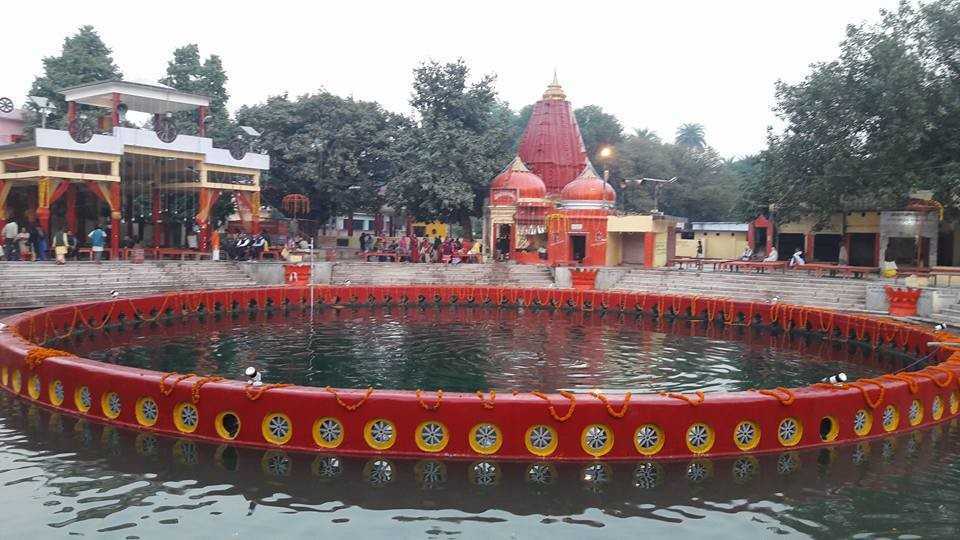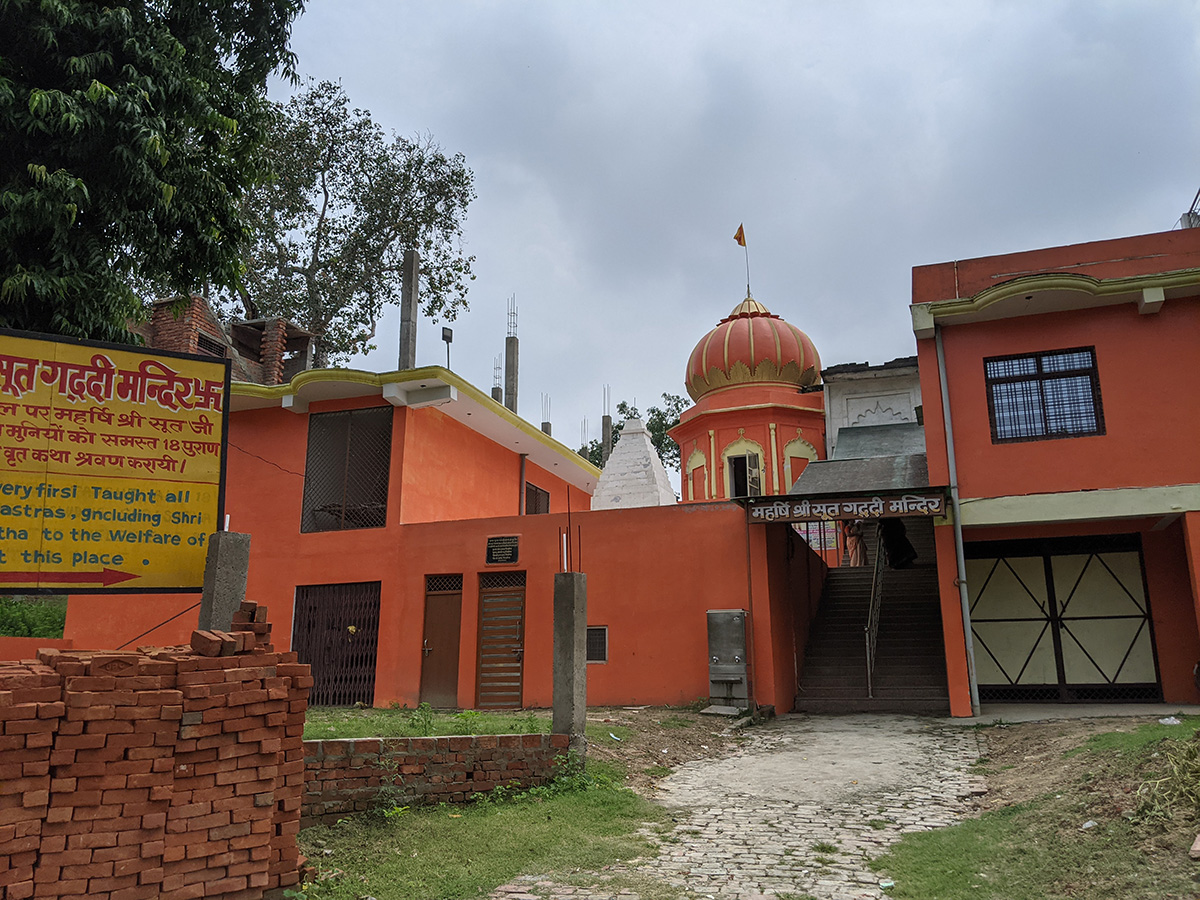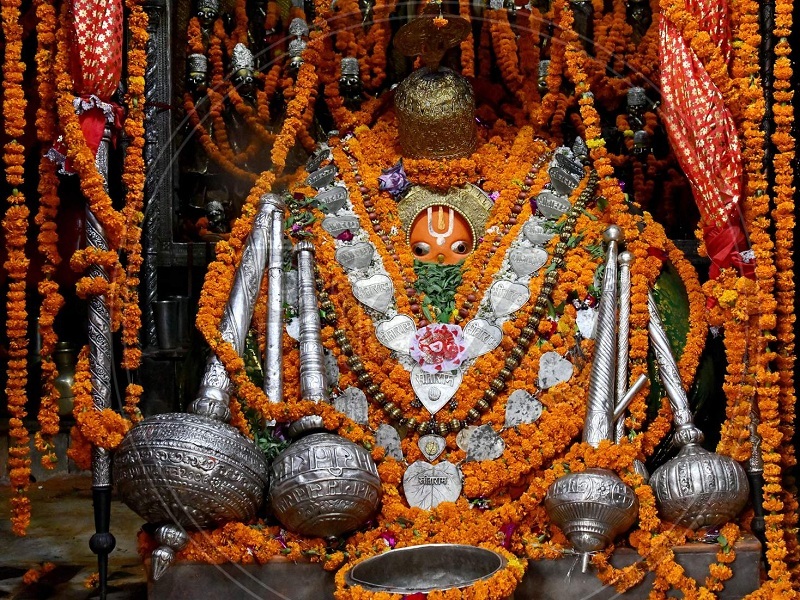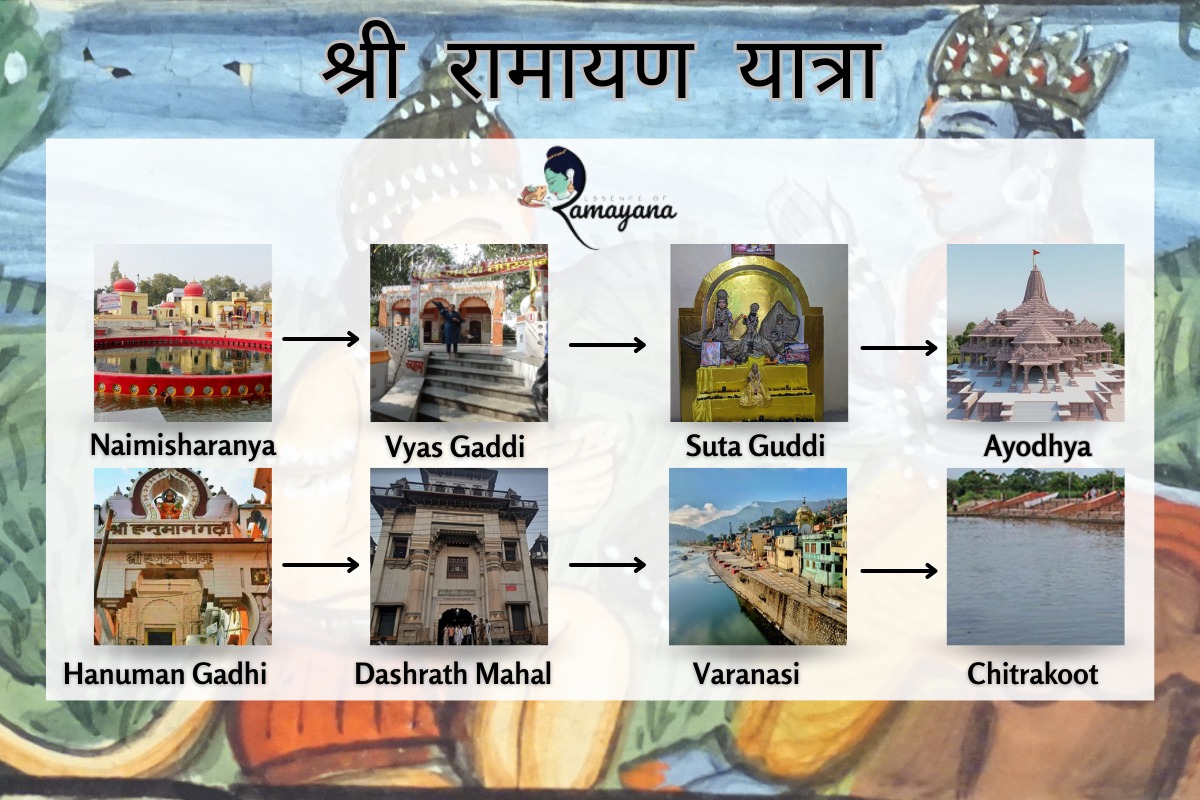Please Check and Explore your Ramayan Yatra with Detailed Itinerary.
Want to explore India’s rich heritage and feel the power of Lord Rama? Then join the “Shri Ramayana Yatra” route. You will get a unique insight into India’s rich history, rituals, and traditions from the point of view of Rama himself! A Ramayana yatra, led by a team of Shiv Sena activists and Yogi Adityanath’s MP supporters, will be visiting the 12 shrines that Lord Rama visited on his way to Ayodhya. The yatras will take hold in different cities. It’ll start from Lucknow in Uttar Pradesh and move to all binding sites in the Ramayana tour. On this tour, you will also see a glimpse of the Jyotirlinga temple, which is said to have been constructed by Lord Rama himself in his image.
Outlined Itinerary
LUCKNOW - AYODHYA - PRAYAGRAJ - CHITRAKOOT - VARANASI - PATNA VIA BUXAR – JANAKPUR- SITAMARHI AND PATNA – GAYA
Places To Visit:
Naimisharanya Misrikh Temple – Chakratirth - Suta Gaddi - Vyas Gaddi - Dadhichi Kund - Sarayu River Bath – Rama Janmabhoomi - Hanuman Garhi Temple - Dasharath Mahal - Valmiki Ramayana Bhavan – Kanaka Bhavan - Nandi Gram - Shringverpur - Triveni Sangam - Veni Madhav Temple - Bade Hanuman Temple - Akshayvat - Gupt Godavari - Sati Anusuya Ashram - Sphatik Shila – Hanuman Dhara - Kamadgiri Parvat - Ram Ghat - Bharat Milap Temple - Bharat Koop – Ram Darshan -Ganesh Bhag - Kashi Vishvanath Temple - Annapurna Temple - KaalBhairav Mandir - Bindu Madhav Temple - Tulasi Manas Temple – Sankat mochan Hanuman Temple - Ganga Aarti - Dashashwamedh Ghat – Siddhashram - Sri Ram Mandir - Janaki Mandir - Ram Sita Vivah Mandap - Janaki Sitamarhi Temple – Panaura Dham - Vishnupada Temple - Bodh Gaya - Sita Kund
Day 1 Lucknow
All yatris will meet at one point in Lucknow, the official check-in time is 1PM but we shall get a few rooms for early check-in. We have to adjust, freshen up and get ready quick for Naimisharanya Tour. Light snacks will be served in bus (on our way to Naimisharanya).
· ACCOMODATION Ramada By Wyndham Hotel
· WEATHER 32°Hi 27°Low - Quite Hot
· PLACES TO VISIT Naimisharanya Misrikh Temple, Chakrateerath, Suta Gaddi, Vyasa Gaddi OTHER PLACES Dadichi Kund
· PLAN FOR THE DAY 07:00-12:00: Devotees Arrival & Pick-up for Hotel 09:00-12:00: Brunch Prasadam (Parallel) 13:00-20:00: Naimisharanya Tour 20:30-21:30: Dinner Prasadam 21:30: Retire

Naimisharanya Misrikh Temple: This is the place where the Srimad Bhagavatam was spoken by Suta Goswami to the sages headed by Shaunak rishi. When Lord Brahma contemplated a great wheel that would span the entire universe, the wheel’s center was at Naimisaranya. Naimisaranya has a radius of 16 km, in which all the sacred places in India are located. This is the place where the demigods came to ask Dadhichi to supply them with his body to kill the demon Vrittrasura. It is also said that Lord Rama had performed a sacrifice here to kill Ravan.
Chakratirth: When Brahma contemplated about the location of Naimisharanya, this tirth was formed. It is a water body that is located just in front of the Naimisharanya Misrikh Temple. A dip is recommended for anyone who visits this holy place.

Suta Gaddi
· This is the place where Suta Goswami spoke the Srimad Bhagavatam to 88000 rishis, headed by Saunaka rishi.
· It is built the shape of a temple with the deities of Krishna and Radha along with the murti of Suta Goswami.
Vyas Gaddi
· This is the dwelling of Vyasadev when he wrote the puranas itihas and 108 Upanishads and split the vedas into 4 parts: Rig Veda, Yajur Veda, Sama Veda and Atharva Veda.
· He transmitted his knowledge to Jaimini, Angeera, Pail, Suka, Vaisampaayam and Suta.
Dadhichi Kund: A demon called Vritrasura was born of a yajna because a mantra was chanted irregularly. This demon considered Indra his enemy and his effulgence diminished the power of the demigods. The demigods sought shelter of the Supreme Personality of Godhead who asked that Dadhichi’s body be supplied to create a weapon that would kill Vritrasura.
Day 2 Lucknow to Ayodhya
· DISTANCE (IN KM) 135km
· TRAVEL DURATION 3 Hours
· WEATHER 32°Hi 27°Lo - Quite Hot
· ACCOMODATION Shan-e-Awadh Hotel
· PLACES TO VISIT Sarayu River Bath, Ram Janmabhoomi, Dasharatha Mahal, Hanuman Garhi, Valmiki Ramayana Bhavan, Kanaka Bhavan, Nandi Gram
PLAN FOR THE DAY
03:30-04:30: Wake up and get ready
04:30-05:30: Luggage loading and departure
05.30-09:00: Bus travel from Lucknow to Ayodhya
09.00-10:00: Arrive at Ayodhya & Sarayu river bath
10.00-11:00: Ram Janmabhumi Temple Darshan
11.00-12.30: Other temples darshan
13:00-16:00: Hotel check-in, lunch prasadam and relax
16:00-20:00: Katha and kirtan
20:00-21:00: Dinner Prasadam & Retire
NOTE: We'll be directly heading for the Sarayu River Bath, so small luggage won't be accessible. Extra pair of clothes should be carried in handbag/ backpack.
Sarayu River Bath: The River Sarayu is closely associated with the Lord Rama's pastimes as the city of Ayodhya is situated on the banks of River Sarayu. King Dasharatha had performed Putrakameshti Yagya on the northern bank of River Sarayu to get children. Also on the banks of River Sarayu Sri Rama had received various secret mantra of Dhanurvidhya sage Vishwamitra – one of the seven sage of current manavantara.
Please Note: We'll be taking bath here. Kindly carry extra pair of clothes
Rama Janmabhoomi: Ram Janmabhoomi is the birthplace of Rama, believed to be the seventh avatar of Vishnu. The Ramayana states that the location of Rama's birthplace is on the banks of the Sarayu River.
TEMPLE TIMINGS:
Summer: 07.30 am to 11.30 pm and 04.30 pm to 09.30 pm
Winter: 09:00 am to 11:00 am and 04:00 pm to 9:00 pm.

Hanuman Garhi Temple: When Lord Rama returned to Ayodhya after conquering Ravana, Hanumanji started living here. That is why it was named Hanumangarh or Hanuman Kot. From here, Hanumanji used to protect Ramkot. In the main temple, Pawansut sits in the lap of Mata Anjani. This huge temple and its residential complex is spread over 52 bighas.
Dasharath Mahal: Honoring Lord Rama and Sita, this temple is found in the ancient city said to be the same that they returned to after 14 years of exile. It is where Maharaja Dasharatha is believed to reside with his kith and kin. Now the place houses a temple, which depicts Ram, Sita and Lakshmana Bharat Shatrughan as the chief deities. In the past, this key site has staged water shows and large-scale reenactments of the Ramayana along the nearby river Sarayu
Valmiki Ramayana Bhavan: This Bhawan (building) is famous for the Valmiki Ramayana, which has been engraved beautifully on marble. This Ramayan is in Sanskrit and is one of the largest ancient epics in world Literature. All the 24000 slokas divided in parts are engraved on the walls of the building.
Kanaka Bhavan: Kanak Bhawan is one of the finest and famous temples in Ayodhya and is a must visit. It is believed that this Bhawan was gifted to Devi Sita by Kaikei immediately after her marriage to Lord Ram. This is private palace of Devi Sita and Lord Rama. Vikramaditya got it renovated.
Nandi Gram: Nandigram, also known by ancient name Bharatkund, is a village in Sohawal tehsil in Ayodhya district in the Indian state of Uttar Pradesh, India. During the exile of Lord Ram, King Bharat ruled from Nandigram instead of the kingdom's capital Ayodhya
Day 3 Ayodhya to Prayagraj
· DISTANCE (IN KM) 168km
· TRAVEL DURATION 5 hours
· WEATHER 34°Hi 27°Lo - Fairly Hot
· ACCOMODATION 1) Placid Hotel 2) Ravisha Hotel 3) Orchid Hotel
· PLACES TO VISIT Shringverpur, Triveni Sangam & Veni Madhav Temple OTHER PLACES Bade Hanuman Temple, Akshayvat (Prayagraj)
PLAN FOR THE DAY :
04:00-05:00: Wake up & Get Ready
05:00-06:00: Mangla Aarti & Japa
06:00-06:30: Luggage Loading
06:30-07:30: Breakfast Prasad & Departure for Prayagraj
07:30-11:00: Bus Travel
11:00-11:30: Halt for Sringverpur Darshan
11:30-13:00: Bus Travel
13:00-15:00: Lunch and Hotel check-in
15:00-20:00: Evening tour - Triveni Sangam & Veni Madhav Temple
20:00-21:00: Dinner prasad, move to respective hotels & retire!
Shringverpur:
· Shringverpur is a village in Lucknow that is 35kms from Prayagraj.
· It is the capital of the kingdom Nishadraj also known to have been the place of residence of Shringi Rishi.
· This is one of the places where Lord Rama stayed for a night during his exile.
Triveni Sangam: Triveni Sangam is the convergence of river Ganges, Yamuna, and Saraswati. Located in Prayagraj, 174 kilometers away from our previous destination Ayodhya. Yamuna and Ganga can be recognized through their different colors - the Yamuna is greenish in color and the water of Ganges is clear white while Saraswati is known to be invisible.
Please Note: We'll be taking bath here. Kindly carry extra pair of clothes.
Veni Madhav Temple: The Veni Madhav Temple, one of the 12 temples of Lord Madhav (Dwadasha Madhav temples) is situated in Prayag. It is located in Daraganj. This is a Shaligram Vigraha that is mentioned in various Puranas and was also visited by Sri Chaitanya Mahaprabhu.
Temple Timings:
Morning Darshan- 5:00am to 12:00pm
Evening Darshan- 4:00pm to 10:00pm
Bade Hanuman Temple: The Hanuman temple, also known as Lete Hanuman Mandir houses the huge Hanuman deity. This is the only Hanuman temple in which the deity is in a reclining position.
Darshan Timings: 5:30am to 2:00pm and 5:00pm to 8:00pm
Akshayvat: Akshayvat in Prayagraj is a sacred banyan tree located at the Prayagraj fort. It stands on the banks of river Yamuna, next to the sangam. As per the Valmiki Ramayana when Lord Rama visited Bhadwaja Muni’s ashram, the sage had told Lord Rama that if he sees Akshayvat tree in prayagraj on his way to chitrakoot, he can be assured that he is on the right path.
Day 4 Prayagraj to Chitrakoot:
· DISTANCE (IN KM) 131.4 KM
· TRAVEL DURATION 5 Hours
· WEATHER 34°Hi 26°Lo - Fairly Hot
· ACCOMODATION 1) Anuj Residency 2) Hotel Parth 3) Shreedar 4) Ashirvad Hotel
· PLACES TO VISIT Gupt Godavari, Sati Anusuya Ashram, Sphatik Shila, Hanuman Dhara
PLAN FOR THE DAY
05:00-06:00: Wake up & Get Ready
06:00-06:30: Mangla Aarti
06.30-07:30: Breakfast and Luggage loading
07:30-11:30: Check-out & Bus Travel to Chitrakoot
11:30-13:00: Lunch Prasad & Hotel check-in
14:00-20:00: Evening Tour
20:00-21:00: Dinner 21:00: Retire
Gupt Godavari: Located at a distance of about 18 km from the district of Chitrakoot, it is the sight of Lord Rama and Lord Laxmana’s stay during their exile for 14 years.
Sati Anusuya Ashram: Located about 18 km from Ramghat, it is a part of the "Chitrakoot Char Dham".
Sphatik Shila: Situated on the banks of River Mandakini, The Sphatik Shila is in fact two enormous boulders which contain the footprints of Lord Rama and Goddess Sita. It is also the place from where they enjoyed the beauty of Chitrakoot.
Hanuman Dhara: Hanuman Dhara is a gentle stream that flows over the statue of Lord Hanuman. The statue of Bajrang Bali has been built of red stone marble.
Day 5 Chitrakoot to Varanasi:
· DISTANCE (IN KM) 250km
· TRAVEL DURATION 6.5 Hours
· WEATHER 34°Hi 27°Lo - Cloudy, May Rain
· ACCOMODATION 1) Hotel City Inn 2) Prime Land Hotel
· PLACES TO VISIT Left over places in Chitrakoot - Kamadgiri Parvat, Ram Ghat Darshan, Bharat Milap Temple, Bharat Koop
· OTHER PLACES Ganesh Bhag, Ram Darshan
PLAN FOR THE DAY
04:00-05:00: Wake up & Get Ready
05:00-09:00: Tour - Trekking and see remaining places
09:00-10:00: Breakfast Prasadam
10:00-12:00: Katha & Kirtan with ashram devotees
12:00-13:00: Lunch, Luggage loading & Departure to Varanasi
13:00-19:30: Bus Travel to Varanasi
19:30-20:00: Arrive at Varanasi & check-in 20:00-21:00: Dinner and retire
· We'll head to Kamadgiri Parvat early in the morning for trek (6km). The trek will take approximately 3 hours. Kindly prepare accordingly. After arriving at Varanasi, entire luggage will be offloaded. If needed, clothes for laundry can also be given.
Kamadgiri Parvat: The place where Lord Rama, Mata Sita, and Lakshman stayed during their exile of 14 years. A pilgrimage path envelops this hill, whose distance is about 6 km approx. Performing the parikrama takes around 3-4 hours
Ram Ghat:
· Located on the banks of Mandakini River, It is the site where Lord Rama, Goddess Sita, and Lord Laxman held an elaborate conversation with Saint Goswami Tulsidas.
· The ghat offers boating facilities to the tourists, and you can find these boats lining the steps leading to the river.
· A massive statue of Lord Hanuman stands in one corner of the ghat, blessing everyone who visits it.
· A Large number of people start gathering at Ram Ghat from dawn.
Bharat Milap Temple:
· ORIGIN OF NAME: It is served as the site where Lord Bharat met Lord Rama.
· Located in close proximity to this temple is another temple built in honor of Mandavi, the wife of Lord Bharata
Bharat Koop: Located near the village of Bharatpur, the place is about 20km West of Chitrakoot. It houses an enormous well - Bharat Koop!
Ram Darshan:
· Located close to River Mandakini, the deities of Lord Rama, Goddess Sita, and Lord Hanuman reside at this temple.
· A giant statue of Lord Hanuman occupies the entrance and blesses visitors at the entrance. Also present are sculptures of Goswami Tulsidas and Maharshi Valmiki.
· There is a complete prohibition on puja and offerings. The temple showcases an artistic depiction of various events from Ramayana. The various episodes are depicted in the form of statues, carvings, and paintings.
Ram Darshan:
· There are also depictions of the Ramayana from the perspective of various countries like Indonesia, Thailand, Japan, and Korea. These depictions also involve colorful masks and costumes which are used in those countries.
Ganesh Bhag:
· Located on the Karvi-Devangana Road, it is a place of both a esthetic and his torical significance. The main attractions of this place are the temple, palace and the step well. ·The temple complex contains a massive step well ( known as Baoli in the native language ).
· The palace which stands here was built during the 19th century by the Maratha ruler, Peshwa Vinayak Rao, and is maintained by the Archaeological Survey of India.
· This structure is believed to have served as the summer resort of the royal family. Also present is a temple dedicated to Lord Shiva, with arched gateways and pillars.
Day 6 Varanasi:
· PLACES TO VISIT: Morning: Kashi Vishwanath Temple, Annapurna Temple, Kaal Bhairav Temple, Bindu Madhav Temple, Sankat Mochan Hanuman Temple, Tulsi Manas Temple, ISKCON Temple
· Evening: Ganga Aarti, Boat Ride, Dashashwamedh Ghat – Bath
PLAN FOR THE DAY:
04:00-05:00: Wake up & Get ready
05:00-09:00: Morning Tour
09:00-10:00: Breakfast Prasad
11:00-16:00: Shopping and Lunch in Hotel
16:00-20:00: Evening Tour
20:00-21:00: Dinner Prasad
21:00: Retire
· In the evening, we will be taking bath at the Dasashwamedha Ghat. So please carry extra pair of clothes and required essentials in your backpacks.
· PACKING IN VARANSI: The big luggage will be loaded before departing for Patna. Therefore, required packing for the next 3 DAYS should be done in small bag.
Kashi Vishvanath Temple: Also known as the Golden Temple, temple for its striking spire – plated in some 800 kilograms of pure gold. Varanasi is Said to be the point at which the first jyotirlinga, the fiery pillar of light by which shiva manifested has supremacy over others gods, broke through the Earth’s crust and flared towards the heavens. There is popular belief that Lord Shiva actually stayed here for some time.
Annapurna Temple: Parvati stole her fair complexion (Gauri form). She asked Shiva for his help to reacquire her Gauri form. Shiva asked her to donate anna (food) in Varanasi. Hence, she took the form of Annapurna (the goddess of food) with a golden pot and ladle, and donated food in Varanasi.
Kaal Bhairav Mandir: The temple is dedicated to Bhairava (Kaal Bhairav), a fierce form of Shiva and wears a garland of skulls and carries a club of peacock feathers. The word "Kaal" means both "death" and "fate". Kaal Bhairav also means the one whom even death Fears It is believed that even death is afraid of Kaal Bhairav.
Bindu Madhav Temple: According to a saga in Kashi Khand (mentioned in Kashi Vishnu Yatra) when Lord Vishnu evicted King Divodasa from his Kingdom he established himself in the form of Adi Keshav at Padodak teerth. Thereafter, Lord Vishnu when reached Panchnad Teerth he got infatuated with the glory of Kashi.
Tulasi Manas Temple: One of the famous Hindu epics, Ramayan was originally written in Sanskrit language by Sanskrit poet Valmiki between 500 and 100 BC. Being in Sanskrit language, this epic was not accessible to and understood by masses. In the 16th century, Goswami Tulsidas wrote the Ramayan in Awadhi dialect of Hindi language and the Awadhi version was called Ramcharitmanas (meaning Lake of the deeds of Rama) In 1964, the Sureka family constructed a temple at the same place where Goswami Tulsidas wrote Ramcharitmanas. This place is called Tulasi Manas Temple.
Sankatmochan Hanuman Temple: Besides the Assi river stream, on the way of Durga Temple to Banaras Hindu Temple this well known temple of Lord Hanuman is situated. This temple is also known as “Monkey” temple, as lot of monkeys are there inside the premises.
Ganga Aarti: In the evening, the group will head to Dasashwamedh Ghat at around 7 PM to attend the most blissful Ganga Arati. A deity of Mother Ganga is placed in the centre at one of the many raised platforms. With the sound of bells and chants and lighting of incense sticks and diyas, the aarti is carried on. The priests worship Mother Ganga in such a synchronised manner that it makes for a spellbinding sight. They have been doing it in front of thousands of people for years now, and the practice and undying devotion make them perfect in what they do.
Dashashwamedh Ghat: Dashashwamedh Ghat is a main ghat in Varanasi on the Ganga River in Uttar Pradesh. It is located close to Vishwanath Temple and is probably the most spectacular ghat. Two Hindu legends are associated with it: according to one, Brahma created it to welcome Shiva, and in another, Brahma sacrificed ten horses during Dasa-Ashwamedha yajna performed here.
Please Note: We'll be taking bath here. Kindly carry extra pair of clothes.
Day 7 Varanasi to Patna via Buxar
· DISTANCE (IN KM) 135km + 125km
· TRAVEL DURATION 4 Hours 30 Mins + 5 Hours
· WEATHER 33°Hi 26°Lo - May Rain
· ACCOMODATION Hotel Chanakya
· PLACES TO VISIT Buxar - Siddhashram, Tadaka Temple (Tataka was killed here, Rishi Vishvamitra took Rama & Lakshman at Buxar)
PLAN FOR THE DAY :
05:00-06:00: Wake up & Get Ready
06:00-06:30: Luggage loading
06:30-07:00: Breakfast Prasad & Departure
07:00-12:00: Bus Travel
12.00-12:30: Reach Buxar, Tadaka Van Darshan
12:30-14:30: Katha & Lunch Prasadam
14.30-20:00: Bus Travel
20.00-20:30: Reach Patna & Hotel check-in
20:30-21:30: Dinner Prasad & Retire
Siddhashram: This place has also been known as Siddhashram, Vedgarbhapuri, Karush, Tapovan and Chaitrath, in ancient history. According to mythology, sage Vishwamitra, the family guru of Lord Rama and eighty thousand saints, had their sacred ashram at the banks of holy river Ganges that reside inside the modern District Buxar.
Sri Ram Mandir: Shri Ram had his very first battle at this place. His image of a brave warrior emerged from here. It is also known as Tadaka Van as demon Tadaka was killed here. This temple is located near Ganga in Chitravan, Buxar. Lord Rama and Hanuman are worshipped here.
Day 8 Patna to Janakpur:
· DISTANCE (IN KM) 190km
· TRAVEL DURATION 7 Hours
· WEATHER 31°Hi 23°Lo - Cloudy, Will Rain
· ACCOMODATION 1) Hotel Welcome 2) Hotel Maniki 3) Hotel Vrindavan
· PLACES TO VISIT ISKCON Temple Patna, Janki Mandir & Ram-Sita Vivah Mandap
PLAN FOR THE DAY
05:00-06:00: Wake up & Get ready
06:00-06:30: Mangla Aarti
06:30-07:15: Breakfast, luggage loading and check-out
07:15-08:00: Darshan Aarti at ISKCON Temple Patna
08:00-13:00: Bus Travel to Janakpur
13:00-14:00: Lunch Prasad
14:00-16:00: Bus Travel
16:00-17:00: Check-in & get ready
17:00-20:00: Janki Mandir & Mandap Darshan, Katha & Kirtans
20:00-21:00: Dinner Prasad & Retire
Janakpur: Janakpur, is a sub-metropolitan city in Dhanusa District of current day Nepal. This city is located about 225 km south-east of Kathmandu. This is Mother Sita’s (Janaki)birthplace and place of marriage.
Janaki Mandir: Queen Vrisha Bhanu of Tikamgarh, India built the temple in 1911 AD. It is constructed in the mixed style of Mughal and Hindu architecture. It is a three-storied structure and it is made entirely of stone and marble
Ram Sita Vivah Mandap: After completing the necessary auspicious rites at an auspicious moment, Vijaya, and keeping Vasishta and other maharshis in the forefront, Rama accompanied by his brothers adorned with various glistening ornaments of every kind came into his father's presence.
Day 9 Janakpur, Sitamarhi & Patna
·
Copyright © CAREMYTRIP HOSPITALITY PRIVATE LIMITED All rights reserved


